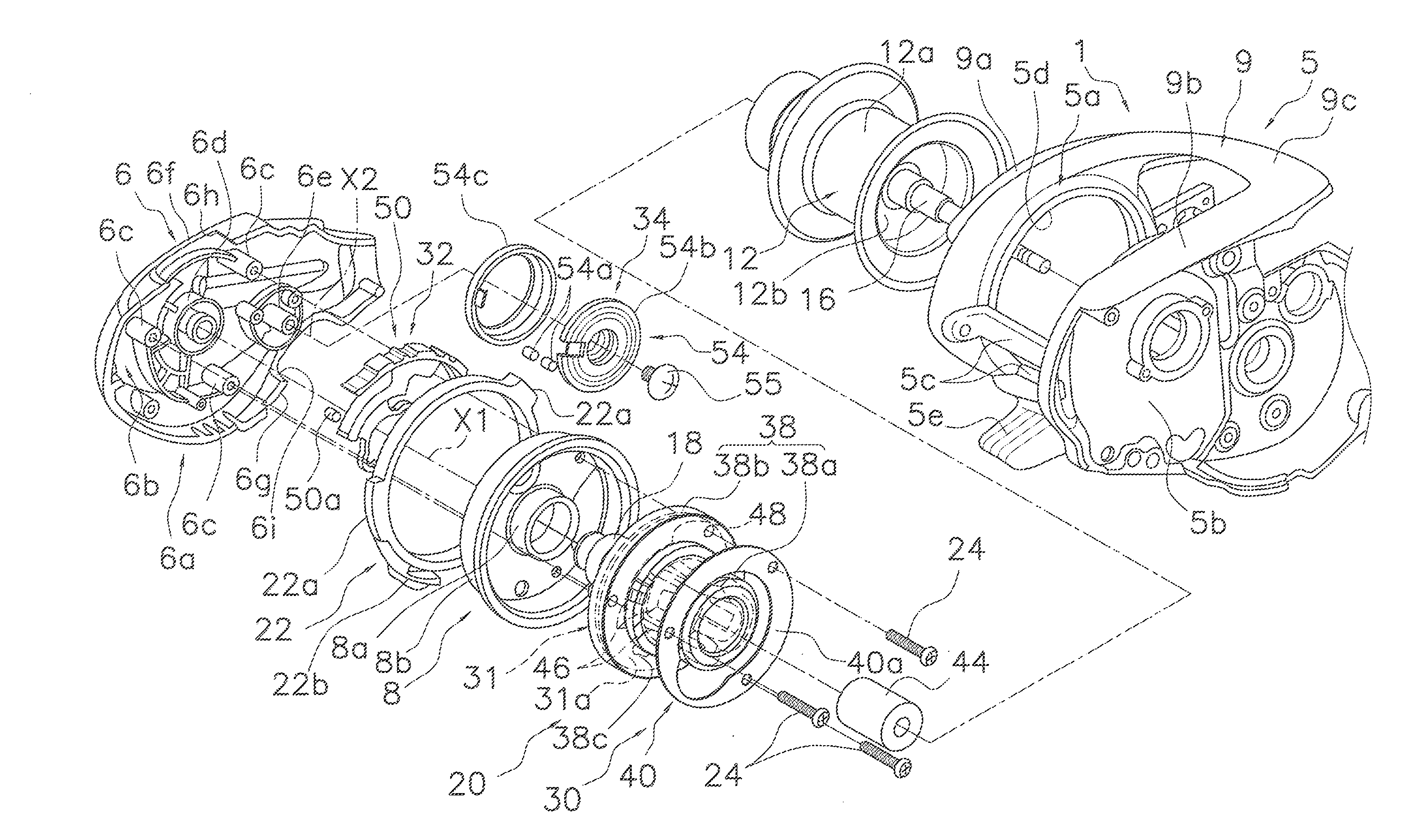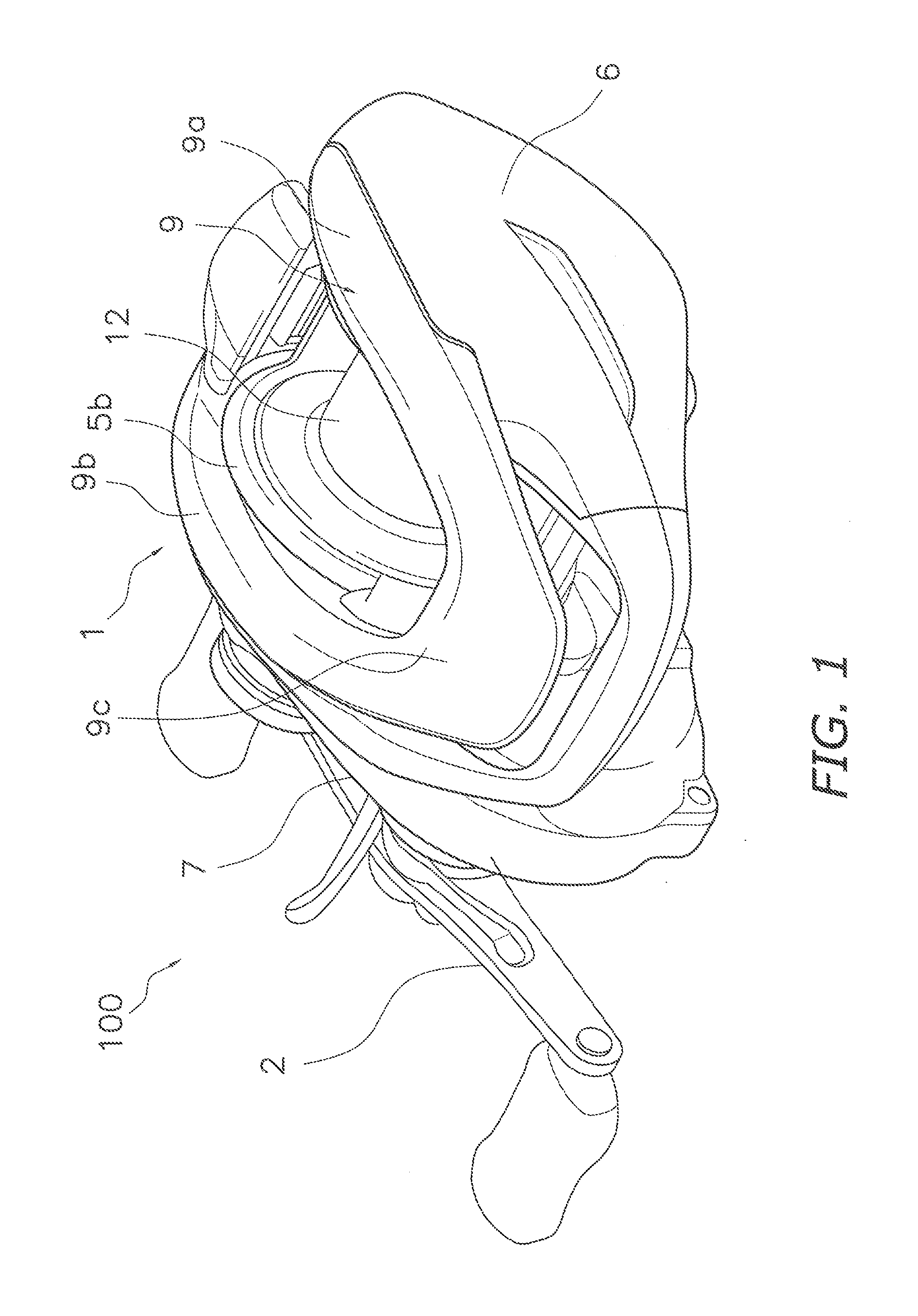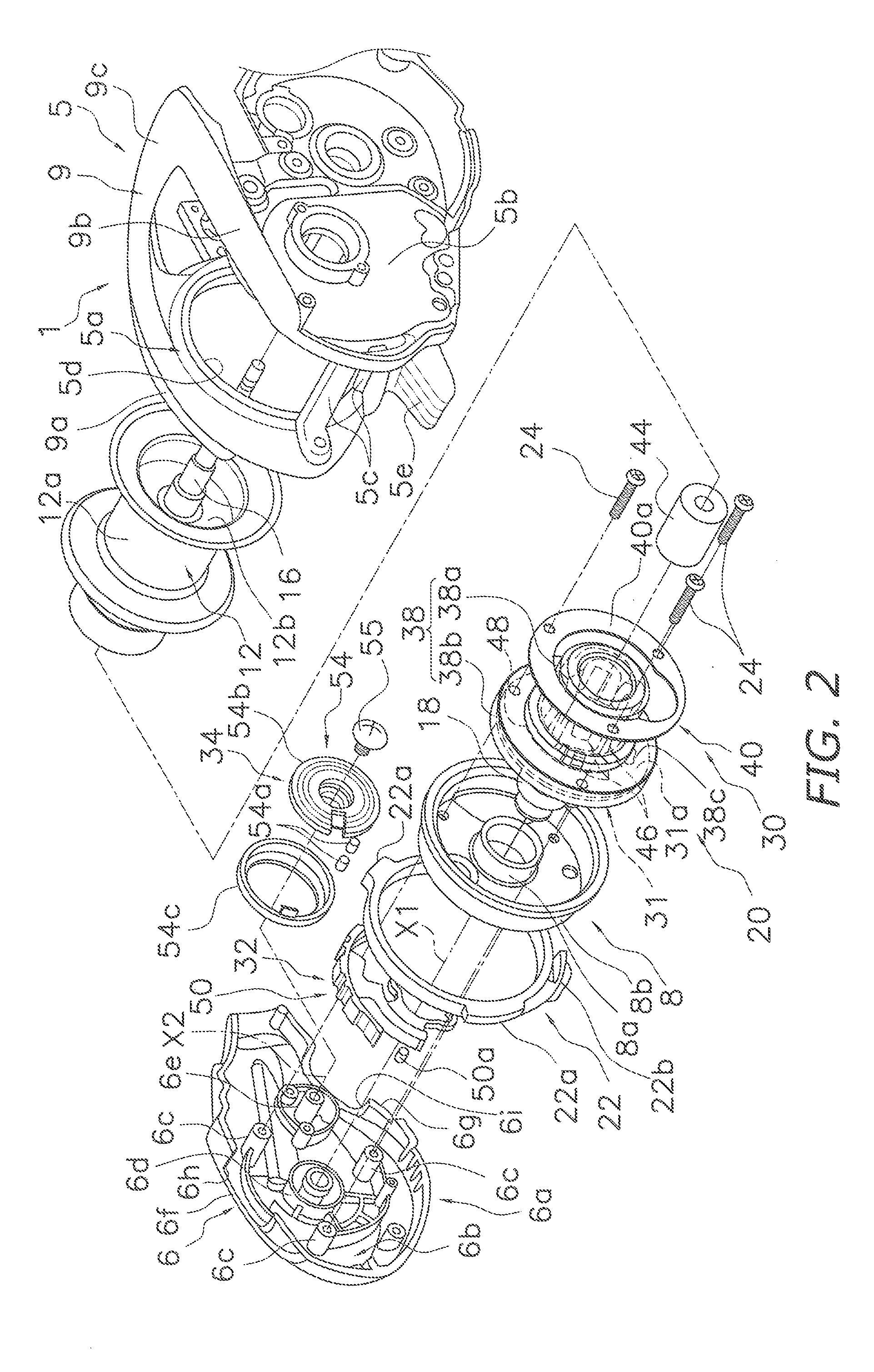Dual-bearing reel
a reel and dual-bearing technology, applied in reels, applications, fishing, etc., can solve the problems of unlikely change of brake mode and disabled operation of the first regulator, and achieve the effects of less variation of magnetic flux density, less varies in magnetic flux density, and efficient shielding
- Summary
- Abstract
- Description
- Claims
- Application Information
AI Technical Summary
Benefits of technology
Problems solved by technology
Method used
Image
Examples
first preferred embodiment
[0047]In FIGS. 1 and 2, a dual-bearing reel 100 according to a first preferred embodiment of the present invention is of a type capable of casting out a fishing line (i.e., reeling out a fishing line in a forward direction). The dual-bearing reel 100 includes a reel body 1, a handle 2, a spool 12, a spool shaft 16 and a brake unit 20 (see FIG. 2). The brake unit 20 is mounted to the reel body 1 and is configured to electrically brake rotation of the spool 12.
[0048]The reel body 1 includes an integrally formed frame 5 and a side cover 7 disposed on the handle 2 side of the frame 5.
[0049]As shown in FIG. 2, the frame 5 includes a first side plate 5a, a second side plate 5b, a plurality of coupling portions 5c and a thumb rest 9. The first side plate 5a is disposed on the opposite side of the handle 2. The second side plate 5b is disposed in opposition to the first side plate 5a. The coupling portions 5c couple the first side plate 5a and the second side plate 5b. The pair of the first...
second preferred embodiment
[0073]In the first preferred embodiment, the first shield member 40 is designed to be mounted between the brake magnet 44 and both of the first detector 52 and the second detector 56. In the present invention, however, the positional arrangement of the first shield member 40 is not limited to the above.
[0074]In a second preferred embodiment shown in FIG. 10, a second shield member 140 is disposed on the second surface 31b of the circuit board 31 so as to be disposed both between the first detector 52 and the second magnets 54a and between the second detector 56 and the first magnets 50a. The second shield member 140 is formed by, for instance, curving an iron plate having a predetermined width (of e.g., roughly 5 mm). The second shield member 140 has a third shield portion 140a and a fourth shield portion 140b. The third shield portion 140a shields transmission of the magnetic fluxes of the second magnets 54a to the first detector 52. The fourth shield portion 140b shields transmiss...
third preferred embodiment
[0075]In a third preferred embodiment of the present invention shown in FIG. 11, a brake portion 230 further includes an O-ring 260 and a compression member 262. The O-ring 260 is contactable to the second end surface 44b. The compression member 262 is fixed to a spool shaft 216, and can compress the O-ring 260 while the O-ring 260 is interposed and held between itself and the second end surface 44b. The O-ring 260 is an exemplary elastic ring. The compression member 262 is an annular member, and has an annular recess 262a on its outer peripheral part in order to attach the O-ring 260. Furthermore, the compression member 262 has a tapered part 262b in its inner peripheral part. The tapered part 262b functions as a disc spring. The inner diameter of the tapered part 262b is slightly smaller than the outer diameter of a part of the spool shaft 216 to which the compression member 262 is mounted. The spool shaft 216 has an annular groove 216a on its part to which the tapered part 262b o...
PUM
 Login to View More
Login to View More Abstract
Description
Claims
Application Information
 Login to View More
Login to View More - R&D
- Intellectual Property
- Life Sciences
- Materials
- Tech Scout
- Unparalleled Data Quality
- Higher Quality Content
- 60% Fewer Hallucinations
Browse by: Latest US Patents, China's latest patents, Technical Efficacy Thesaurus, Application Domain, Technology Topic, Popular Technical Reports.
© 2025 PatSnap. All rights reserved.Legal|Privacy policy|Modern Slavery Act Transparency Statement|Sitemap|About US| Contact US: help@patsnap.com



